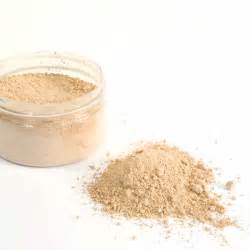
NEWS

Polishing powders is usually composed of cerium oxide (CN-CE01), alumina (CN-L30F), silica (CN-SP50F), iron oxide, zirconia (CN-R30F), chromium oxide and other components, different materials Hardness is different, the chemical properties in water are also different, so the use of different occasions. Alumina and chromium oxide Mohs hardness of 9, cerium oxide and zirconia 7, iron oxide lower. Cerium oxide and silicate glass chemical activity is high, hardness is also quite, it is widely used in glass polishing.
In order to increase the polishing rate of cerium oxide, fluorine is usually added to the cerium oxide polishing powders to increase the grinding rate. Low cerium mixed rare earth polishing powders is usually mixed with 3-8 fluorine; pure cerium oxide polishing powders is usually not doped with fluorine.
For ZF or F series of glass, because of its own hardness is small, and the material itself, the higher the fluorine content, so the choice of non-fluorine-free polishing powders is better.
basic requirements
(1) the particle size uniformity, within the allowable range; particle size and uniformity determines the polishing speed and accuracy, sieve screening mesh to grasp the relative particle size of the powder, the average particle size determines the polishing The overall level of particle size.
(2) have a higher purity, without mechanical impurities;
(3) good dispersion and adsorption to ensure that the processing process is uniform and efficient, may be appropriate to add LBD-1 dispersant to improve the suspension rate; good polishing powders to have a good suspension, the shape of the powder and Particle size has a certain impact on the suspension performance, nano-particle size of the suspension of the suspension is relatively better, so the general selection of nano-polishing powders.
(4) powder particles have a certain lattice morphology, broken sharp sharp corners to improve the efficiency of polishing; powder crystal form is pooled together single crystal particles, determines the powder of the machinability, wear resistance And liquidity. Powder particles together in the polishing process of separation (broken), so that the machinability, abrasion resistance gradually decreased, the particles for the ball-type polishing powders has good machinability, wear resistance and mobility.
(5) have the appropriate hardness and density, and water has a good wetting and suspension, because the polishing powders needs to mix with water, the hardness of the relatively large powder with a faster cutting effect, while adding some grinding aids And so can also improve the cutting effect; different areas of application will be very different, including their own processing technology.
Polishing powders is usually composed of cerium oxide CeO2, alumina Al2O3, silica SiO2, iron oxide Fe2O3, zirconia ZrO2, chromium oxide Cr2O3 and other components. Different materials of different hardness, chemical properties in the water is also different, so the use of different occasions. Typically, cerium oxide polishing powders for glass and silicon-containing material polishing, alumina polishing powders for the polishing of stainless steel, iron oxide can also be used for glass, but slower, commonly used in soft material polishing. Stone polishing often use tin oxide, tile polishing often use chromium oxide.